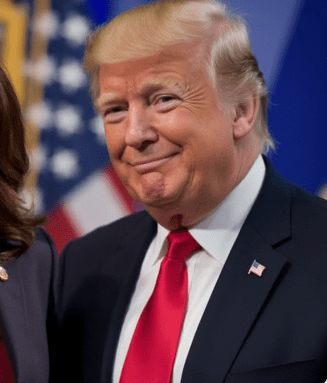On November 11, 2024, Bitcoin, the world’s leading cryptocurrency, surged to a record-breaking price of over $75,000, reaching a new all-time high. This milestone comes as Bitcoin and the broader cryptocurrency market experience renewed interest from both individual investors and institutional entities. The current price rally reflects increased confidence in digital assets, as well as broader economic trends that have driven investors to seek alternative assets in response to fluctuating global markets and inflation concerns.
The Road to $75,000: Key Factors Behind the Price Surge
Several key factors have contributed to Bitcoin’s rise to its current valuation, building momentum from previous rallies and attracting a new wave of investors.
- Institutional Adoption: Institutional support for Bitcoin has played a crucial role in driving its price upwards. Over the past year, large financial firms such as BlackRock and Fidelity have introduced Bitcoin-related investment products, including ETFs (Exchange-Traded Funds), which allow institutional and retail investors to gain exposure to Bitcoin without directly holding the asset. This mainstream acceptance has added credibility to Bitcoin, reassuring investors of its viability as a long-term asset.
- Inflation Concerns and Safe-Haven Appeal: With global inflation levels remaining high, Bitcoin is increasingly seen as a hedge against currency devaluation. Countries with high inflation rates, such as Argentina and Turkey, have witnessed a surge in Bitcoin adoption as citizens look for stable stores of value. Investors in developed economies, too, are turning to Bitcoin as a potential safeguard against economic uncertainty.
- Increasing Scarcity Due to Halving Events: Bitcoin’s supply is limited to 21 million coins, and regular halving events (where mining rewards are reduced by half every four years) make the cryptocurrency increasingly scarce. The most recent halving event, in 2024, has further reduced the rate of new Bitcoin entering circulation, putting upward pressure on its price. As demand grows, the scarcity effect has intensified, making Bitcoin more valuable over time.
- Growing Adoption of Decentralized Finance (DeFi): The rise of DeFi platforms, which operate on blockchain technology, has expanded the use cases for cryptocurrencies like Bitcoin. As more users participate in DeFi activities such as lending, borrowing, and earning interest, demand for Bitcoin and other cryptocurrencies has risen. Bitcoin remains a central asset in the DeFi space, as it is often used as collateral for various financial services.
Market Reactions and Investor Sentiment
The Bitcoin rally has generated excitement among both seasoned cryptocurrency traders and new investors, sparking increased trading activity on major exchanges. Trading volumes have surged, and many cryptocurrency exchanges have reported a record number of new user registrations. The heightened demand has led to price fluctuations, but the general trend has remained upward, with positive sentiment driving the market.
Major financial analysts have commented on the significance of Bitcoin’s new high, with some projecting that the cryptocurrency could reach even higher valuations if current trends persist. Crypto analysts are pointing to key technical levels, with many expecting Bitcoin’s next resistance point around the $80,000 to $85,000 range.
Criticism and Regulatory Concerns
Despite Bitcoin’s success, it remains a controversial asset, attracting criticism from environmental advocates, government regulators, and traditional financial institutions.
- Environmental Impact: Bitcoin mining consumes significant amounts of electricity due to the computational power required to verify transactions on its blockchain. This has led to concerns about its environmental impact, particularly in countries where mining is powered by fossil fuels. Some environmental groups argue that Bitcoin’s energy consumption undermines efforts to reduce global carbon emissions. However, the industry has made efforts to transition to renewable energy sources, with several mining operations now running on green energy.
- Regulatory Uncertainty: Governments worldwide have taken different approaches to Bitcoin regulation, with some embracing it as an innovative financial asset and others viewing it as a potential risk to financial stability. The United States, for instance, is working to establish clearer regulatory frameworks for cryptocurrencies, though some lawmakers have called for stricter controls due to concerns over money laundering, tax evasion, and investor protection.
- Concerns About Volatility: Bitcoin’s price volatility remains a significant barrier to its acceptance as a mainstream currency. While some investors view its volatility as an opportunity for profit, others are cautious, noting that the asset’s value can experience dramatic swings within short periods. This characteristic makes it less reliable as a medium of exchange and limits its potential for everyday use.
Looking Ahead: What’s Next for Bitcoin?
Bitcoin’s new all-time high raises questions about its long-term trajectory and the role it will play in the global financial system. With the recent wave of institutional adoption and retail enthusiasm, some experts believe that Bitcoin could solidify its position as “digital gold,” a status that would make it a valuable store of wealth for future generations.
Several factors will influence Bitcoin’s future performance, including regulatory developments, market sentiment, and the rate at which new technologies emerge within the crypto space. The introduction of new financial products, such as Bitcoin ETFs, could open up additional avenues for investment, increasing accessibility and driving demand.
Conclusion
Bitcoin’s record-breaking price of over $75,000 marks a new chapter in the history of digital assets, highlighting the evolving role of cryptocurrencies in the modern financial landscape. As Bitcoin continues to gain traction among both individual and institutional investors, its future remains uncertain but promising, with the potential to further disrupt traditional finance and provide new opportunities for investment and wealth preservation.
This recent milestone reflects not only the strength of Bitcoin as an asset but also the broader acceptance of digital currencies. As the world navigates economic uncertainty and inflation concerns, Bitcoin’s role as a decentralized, borderless asset will likely keep it in the spotlight, with investors and analysts closely watching its next moves.













